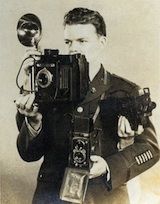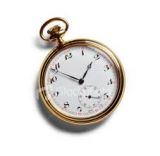- Forum
- Photography and Camera Forum
- Taking the Photo | Editing | The art of Photography!
- Beginner Photography Forum
- Is shooting in "P" mode ok?
Is shooting in "P" mode ok?
-
 Topic Author
Topic Author
- D5000
- New Kid On The Block
-
- Nikon D5000
- Followers: 8
- Posts: 50
-
Points:
0
-

- MLKstudios
- Banned
-
- D800 ;-)
- Followers: 72
- Posts: 4480
-
Points:
2
Post #148688
Matthew L Kees
MLK Studios Photography School
www.MLKstudios.com
[email protected]
"Every artist, was once an amateur"
-

- Senne 1976
- New Kid On The Block
-
- nikon d90
- Followers: 5
- Posts: 43
-
Points:
0
Post #148690
-
 Topic Author
Topic Author
- D5000
- New Kid On The Block
-
- Nikon D5000
- Followers: 8
- Posts: 50
-
Points:
0
-

- MLKstudios
- Banned
-
- D800 ;-)
- Followers: 72
- Posts: 4480
-
Points:
2
Post #148704
It's basically the same as Green, but it won't pop up the flash unless you ask it to.
Matthew L Kees
MLK Studios Photography School
www.MLKstudios.com
[email protected]
"Every artist, was once an amateur"
-

- KCook
- Photo Elder
-
- Canon EOS 50D and Olympus E-P5
- Followers: 1325
- Posts: 5410
-
Points:
32913
Post #148710
Kelly Cook
-

- Towcestermark
- Lone Wolf
-
- Canon 500D
- Followers: 9
- Posts: 136
-
Points:
0
-

- MLKstudios
- Banned
-
- D800 ;-)
- Followers: 72
- Posts: 4480
-
Points:
2
Post #148722
Tv (or S) lets you set the shutter speed, and it picks the aperture (the f/stop). This is OK with plenty of light, but it will underexpose in low light when a fast shutter speed is chosen.
Av (or A) lets you pick an aperture and it will chose the shutter speed to get a good exposure. Good for a beginner, as it lets you pick the Depth of Field you want and there is ALWAYS a shutter speed that will give you a good exposure (no problem with underexposure), but beware a small ap, and low ISO will give you some really sloooooooow shutter speeds in low light levels.
M is all manual and requires you to set both the f/stop and the shutter speed using the built in meter.
HTH
Matthew L Kees
MLK Studios Photography School
www.MLKstudios.com
[email protected]
"Every artist, was once an amateur"
-

- MLKstudios
- Banned
-
- D800 ;-)
- Followers: 72
- Posts: 4480
-
Points:
2
Post #148724
Matthew L Kees
MLK Studios Photography School
www.MLKstudios.com
[email protected]
"Every artist, was once an amateur"
-

- Justin Black
- Vendor
- Nikon: D810; Fuji: X100s, X-Pro1, XE-2
- Followers: 101
- Posts: 39
-
Points:
2011
Post #148726
D5000 wrote: I'm still learning about how to shoot in Manual..
Shooting in "P" mode all you have to change is ISO and the camera automatically does the f/stop and shutter speed. Is this better than shooting in Auto?
There is very little in photography that is always "right" or "wrong," "ok" or "not ok." Shooting in Program mode is fine if that's how you choose to shoot and if it doesn't get in the way of what you are trying to do. As with any photographic tool or technique, however, I'd always recommend that the photographer understand what the camera is doing and be able to express the reasons they are choosing to use that particular mode over another one.
I primarily do landscape work. Back in the days of shooting color transparency film, virtually all of my work was spot metered and shot in manual mode, because film was unforgiving and that level of careful precision was how I achieved the best possible results. Now, with digital, the way the medium responds to light is different, so calculating optimal exposure is different. The color Matrix meters these days are quite good at evaluating not only overall luminance, but also the tonal range of each color channel (red-green-blue), so they have certain advantages over traditional metering methods when it comes to exposing to match the performance of the sensor in the camera. We are also able to confirm the exposure we want with the histogram, so for many types of photography there is a good argument to be made that shooting in an automatic mode makes the most sense most of the time. It is always possible to bias the exposure one way or the other using exposure compensation, and to shift shutter speed and aperture as desired.
There are certainly exceptions, but since going [almost] all digital, I am mostly using aperture priority, auto white balance, and Matrix metering. I shoot RAW 100% of the time, expose for maximum data/minimum noise (biased toward overexposure without clipping color channels, otherwise known as exposing to the right), and set correct tonalities, color balance, black point, etc. in post processing. I could achieve the same results in Program mode, but it would require the extra step of shifting the exposure to the aperture or shutter speed I wish to use.
At the end of the day, it's important to identify and understand a simple set of camera settings, tools, and techniques that are legitimately helpful in making the images you want to create, and then concentrate your attention on concepts, themes, light, composition, color, and gesture. As a photographer, one of your goals should be to get the camera out of your way.
Justin Black
Visionary Wild – workshops and travel for the passionate photographer
visionarywild.com
-
 Topic Author
Topic Author
- D5000
- New Kid On The Block
-
- Nikon D5000
- Followers: 8
- Posts: 50
-
Points:
0
-

- Stealthy Ninja
- Moderator
-
- Fuji X stuff and a 1DsIII for some reason
- Followers: 982
- Posts: 16300
-
Points:
6837
Post #148967
It's auto with benefits.
- Forum
- Photography and Camera Forum
- Taking the Photo | Editing | The art of Photography!
- Beginner Photography Forum
- Is shooting in "P" mode ok?
Latest Reviews
The Olympus Pen E-P7 is an affordable micro four thirds mirrorless camera with 4K video capabilities, a 20.3MP sensor, and 121 focus points, making it a solid entry-level camera for beginners.
The Panasonic G9 II is a 25.2-megapixel micro four thirds camera with numerous features that make it punch out of its weight class, like 779 AF points, 5.8K video, and weather sealing.
The Fujifilm XT5 is a 40MP mirrorless camera capable of 6.2K video at 30p. With those specs, it’s an ideal choice for photographers needing a camera to pull double duty for imaging and video.
The Canon EOS R100 is an entry-level mirrorless camera introduced in 2023. But just because it’s an entry-level camera doesn’t mean it’s a bare-bones camera. Find out why in this review!
Forum Top Posters
-
1cheapdarkn... 1 post
Latest Articles
The Olympus Pen E-P7 is an affordable micro four thirds mirrorless camera with 4K video capabilities, a 20.3MP sensor, and 121 focus points, making it a solid entry-level camera for beginners.
Starting a photography business is one thing; sustaining your business over a long period of time is another. Use the tips in this professional photography guide to build something with longevity!
The Panasonic G9 II is a 25.2-megapixel micro four thirds camera with numerous features that make it punch out of its weight class, like 779 AF points, 5.8K video, and weather sealing.
Cinematic photography is an interesting genre that combines photographic and videographic skills along with effective storytelling techniques. The result? Highly impactful images!
Newborn photography requires skill, the right gear, and a lot of patience. This beginner’s guide discusses critical topics that will help you be more prepared for before, during, and after the shoot.
To fill the frame means to expand the footprint of the subject in your shot. Get in close, zoom in, crop the image, or use other techniques to bring the subject to the forefront.
With these simple yet effective beginner photography tips, you can avoid some of the common mistakes beginners make and get improved results with your images.
Urban photography is a genre showcasing features in urban settings. You can photograph people, architecture, mass transit, and many other subjects. Learn how to do so in this guide!


















